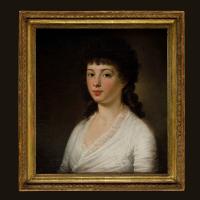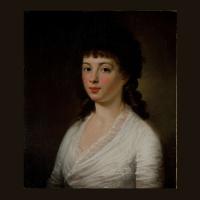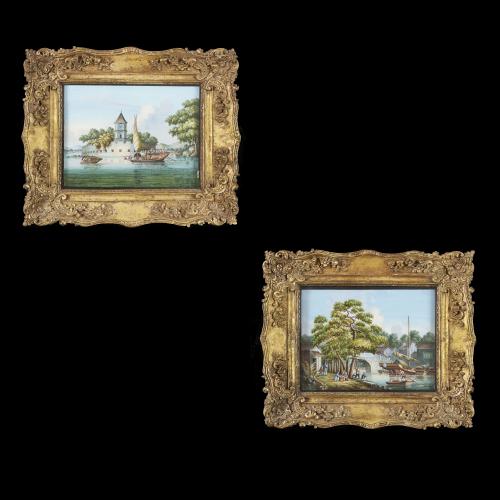
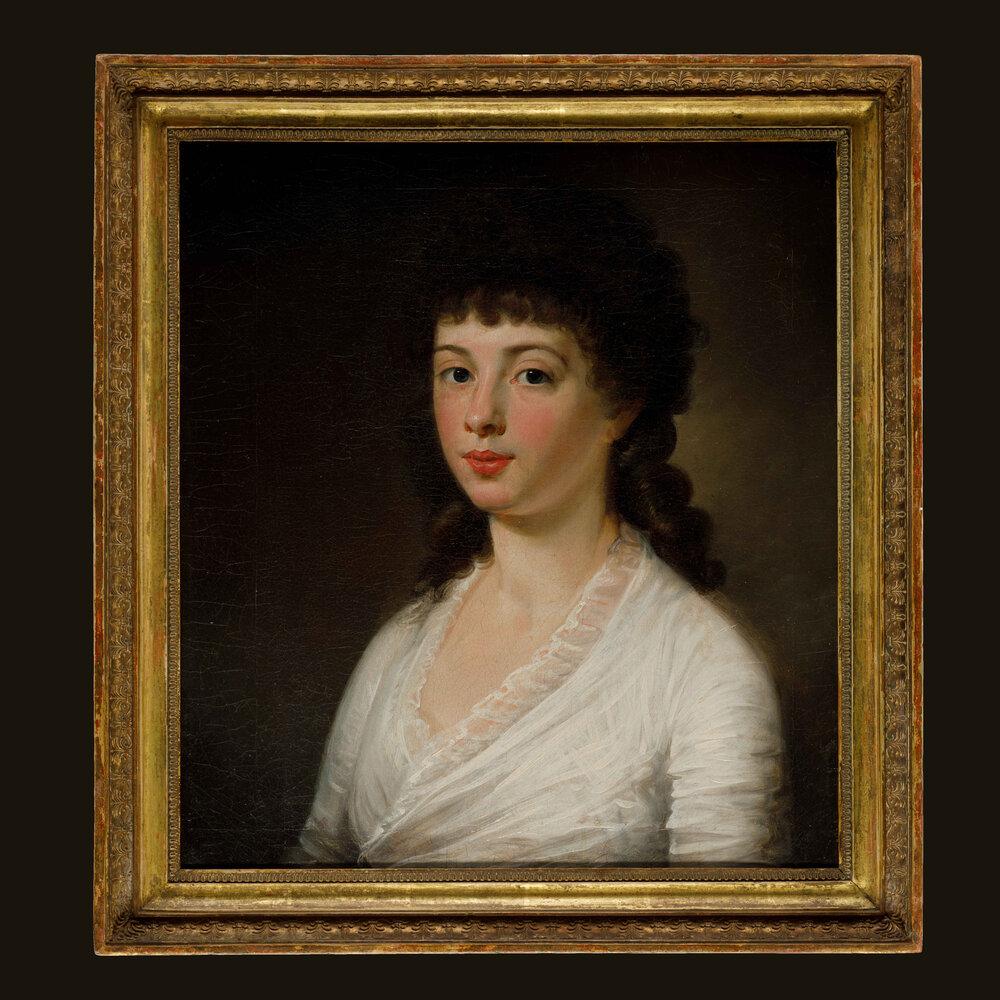
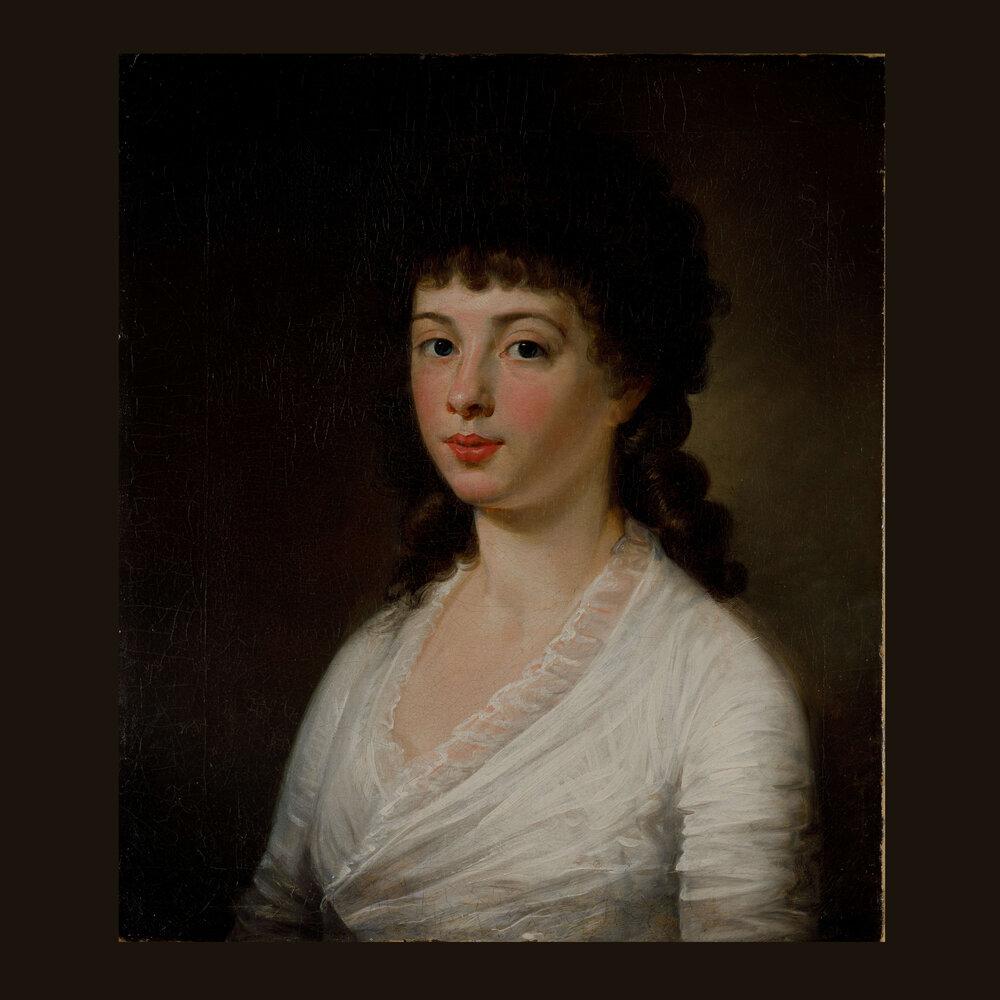
Price
£14500.00This object is eligible for a Certificate of BADA Provenance
The BADA Standard
- Since 1918, BADA has been the leading association for the antiques and fine art trade
- Members are elected for their knowledge, integrity and quality of stock
- Our clients are protected by BADA’s code of conduct
- Our dealers’ membership is reviewed and renewed annually
- Bada.org is a non-profit site: clients deal directly with members and they pay no hidden fees
A Late 18th Century Portrait of a Lady attributed to Henri-Pierre Danloux.
France, circa 1795.
A late eighteenth century portrait of a lady, oil on canvas, in a French Empire 19th century giltwood frame. Attributed to Henri-Pierre Danloux (February 24, 1753 - January 3, 1809).
This fine portrait depicts a young lady wearing a plain, softly pleated cotton wrap dress with delicate muslin ruffle bordering the neckline of the dress. The sitter’s appearance is characterised by its simplicity, particularly her attire; the dress is noticeably plain, though retains a quiet elegance, and she wears no visible jewellery of any kind. Such sartorial simplicity is characteristic of evolving style in the middle to late 1790s where a preference for less elaborate and conspicuous appearance reflected the influence of the French Revolution, which championed freedom and democracy. In this portrait, such political and social ideals are mirrored in the loose, unrestricted wrapping gown with short sleeves that women had begun to wear.
Similar sentiments of emancipation are also conveyed in Mary Wollstonecraft’s Vindication of the Rights of Women (1792). In this seminal text the feminist and political radical denounces elaborate dress, stating that ‘an air of fashion is a badge of slavery’. Wollstonecraft’s vision of the liberated woman consisted of clothing that was ‘simple, elegant and becoming, without being expensive’, and unpowdered, uncurled hair in lieu of elaborate dress and towering hair constructions sported by women in England and France prior to the French Revolution.
In this portrait, though the young lady is dressed in a manner indicative of Wollstonecraft’s emancipated woman, her hair is arranged in curls with a regular fringe. Whilst this could indicate a formal hairdressing process, it is certainly possible that this young woman had naturally curling hair which would have been difficult to train into the more relaxed styles of increasing popularity.
Despite the sitter’s hairstyle retaining some of the more formal qualities of earlier fashions, the absence of hair powder in the sitter’s hair places this portrait firmly in the middle to late 1790s. During this period wheat meal, which was used to make the best hair powder, was needed to feed the English army who were fighting the French. This resulted in taxation of hair powder which, combined with the association of the conspicuous styles of the ancien régime, resulted in reduced usage, as reflected in this portrait.
Height 56.00cm.
Width 48.00cm.
Framed height 58.00cm.
Framed width 63.00cm.
The BADA Standard
- Since 1918, BADA has been the leading association for the antiques and fine art trade
- Members are elected for their knowledge, integrity and quality of stock
- Our clients are protected by BADA’s code of conduct
- Our dealers’ membership is reviewed and renewed annually
- Bada.org is a non-profit site: clients deal directly with members and they pay no hidden fees


